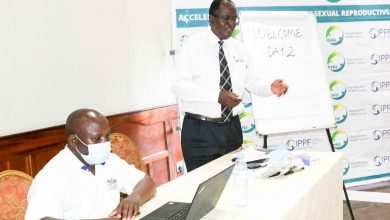
Business
KENYA: KENYA SACCOs MOBILISE CAPITAL BOTTOM OF THE PYRAMID TO REVAMP EONCONOMIC
Just to put things in perspective Uganda's GDP is about USD 25.5bn (UGX 93 Trillion). So basically Kenya's Sacco's represent 15% of Uganda's GDP.
The Lessons from Kenya – SACCOs and how to mobilise capital at the bottom of the pyramid
I was recently in benchmarking Kenya trying to understand why there economy is 3 times bigger than ours and what can we learn from them. These were my findings!
Most of the matatus (taxis as normally called here) had the logo/name of a SACCO written on them. When I inquired I was told the respective SACCOs actually owned the taxis. I then inquired what else the SACCOs owned. I was told they owned several apartment blocks, office blocks and other varied assets. Actually when I dug a bit deeper I found out that SACCOs in Kenya control about KSHS 393bn (UGX 14 Trillion) in assets! yes that represents 15% of Uganda’s GDP. These SACCOs are collectively owned by 3.6m Kenyans!
So what can we learn from this experience?
Ugandans can learn a lot from Kenya when it comes to mobilizing capital through Saccos. As of 2016 Kenya had 176 registered deposit taking Saccos with a total membership of 3.6m. These 3.6m Kenyans have been able to mobilise KSHS 393bn (UGX 14 Trillion) in assets. Deposits stood at KSHS 272bn (UGX 10 Trillion) and Loan portfolio stood at KSHS 297bn (UGX 11 Trillion). There are over 17,000 registered coopeeratives of which 7,000 are Saccos. Only about 176 are deposit taking.
Just to put things in perspective Uganda’s GDP is about USD 25.5bn (UGX 93 Trillion). So basically Kenya’s Sacco’s represent 15% of Uganda’s GDP.
Looking at Uganda’s scenario as of 2016 there were 16,587 registered cooperatives, out of which 3,131 are SACCOs. 944 are engaged in agricultural marketing, and others have ventured into energy and safe water distribution, health services, housing, transport, horticulture, tourism, handcrafts, wine production, irrigation, livestock and diary.
By end of the year 2010, SACCOS had a Net Savings of UGX 208.25 billion and Share Capital of UGX 177.761 billions. The outstanding loans as of 31st December 2010 were UGX 292.135 billion and an income of about UGX 62.4 billion.
SACCOs in Uganda have been plagued by a lot of mismanagement and fraud by the leaders/members. The governance framework is also relatively weak and immature and SACCOs are under the oversight of the Department of Cooperatives under the Ministry of Trade Industry and Cooperatives. In Kenya deposit taking SACCOs are regulated by the SACCO Societies Regulatory Authority (SASRA). I actually struggled to find relevant up to date information on Uganda’s cooperatives. In Kenya I simply went to one website!
There needs to be a concerted effort to mobilise capital at the grass roots by both government and the middle class working population. Our current borrowing levels are crazy! Currently our debt to GDP ratio is 38.6%. At these levels of borrowing coupled with a 3% population growth the middle income dream is far from reality.
However all is not lost! If we estimate the middle class to be say 1m people and each of these can save 50k a month. We can mobilise UGX 600bn a year. Think of the leverage this money could do? How many people would we employ? How many small scale factories would we support and begin? These funds can be lent out at very cheap rates say 5% instead of the crazy 20% charged by commercial banks.
If you are not part of a savings group you need to take action NOW! Join the SACCO at work. Lets Start an investment club with your friends. Open a joint account with your spouse. Open a fixed deposit account with any bank. Subscribe to a life assurance scheme! Do something now to help yourself and the economy mobilise capital! Commit to save a small portion of your salary or income. Wealth accumulation is simple. Work. Earn. Save. Invest. and let the magic of compounding do the rest. that is it!.
Remember the NRM govt has scrapped the tax on Sacco’s! Let’s take up the opportunity now!!
Kerebu Nuwagira
ICEA GROUP.
LIFE AND PENSION.





